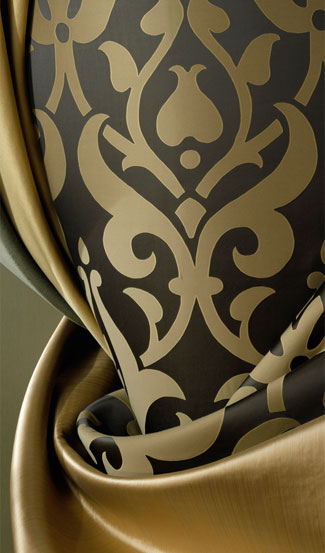
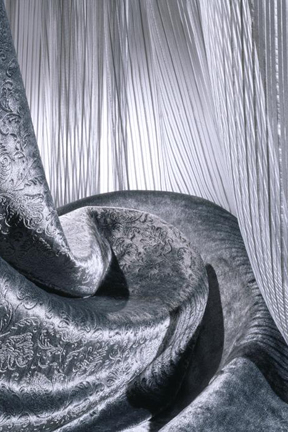
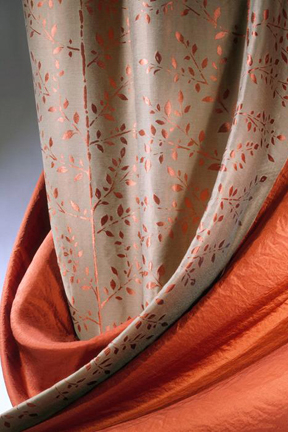

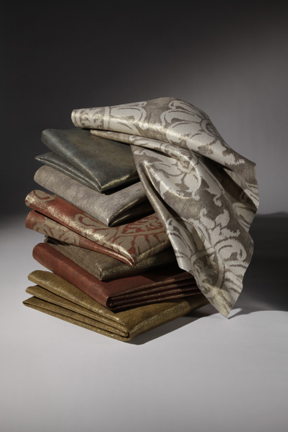
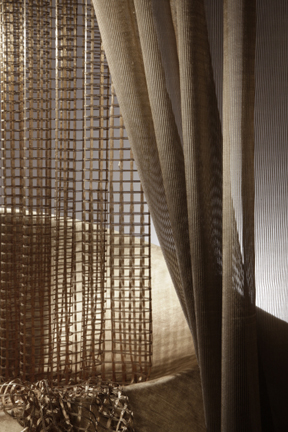
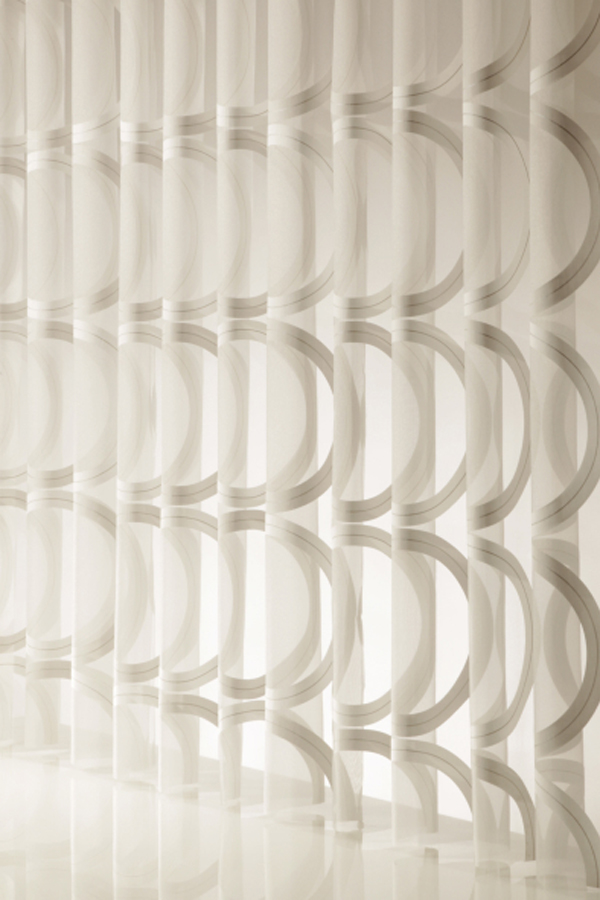
Test Explanations
RODOLPH testing results are noted on each fabric under the DETAIL TAB. If additional testing is required, please contact Customer Service.
- ASTM E662 Smoke Density (Upholstery & Panel)
- Measures the amount of smoke that the specimen emits when ignited.
- BIFMA Fabric 45 Degree Screening Test (Upholstery)
- (Same as Cal 117 Sec E) Determines the ease of ignition and the burning rate when specimen is subjected to an open flame for 1.0 seconds and is given a Pass/Fail rating.
- Boston BFD IX-1 (Upholstery)
- A very severe vertical flame test which measures the ignition resistance of a specimen when exposed to 6" propane torch flame for 10 seconds. After flame, flame propagation distance and afterglow (propagating and non-propagating) are measured.
- Cal Bulletin 117 Sec E (Upholstery & Drapery)
- Determines the ease of ignition and burning rate when specimen is subjected to an open flame for 1.0 seconds and is given a Pass / Fail rating.
- FAR Part 25: 12 Second Vertical (Upholstery)
- A vertical flame test which measures the ignition resistance of a restrained specimen when subjected to 1.5" flame for 12 seconds. Char length, after flame and drip burn are measured.
- FAR Part 25: 60 Second Vertical (Upholstery)
- A vertical flame test which measures the ignition resistance of a restrained specimen when subjected to 1.5" flame for 60 seconds. Char length, after flame and drip burn are measured.
- FMVSS 302 (Upholstery)
- A horizontal flame test, which measures the burning rate of automotive interior materials when subjected to a 1.5" flame. Burning rate is calculated. This is mandatory for all automotive fabrics.
- NFPA 260 / UFAC (Upholstery)
- Measures the ability to resist ignition by a cigarette when the specimen is tested in combination with polyurethane foam cushioning. Char length and ignition / non-ignition of substrate are assessed.
- NFPA 701 Test #2 Large Scale Flat Method (Upholstery)
- Measures the ignition resistance of a slightly specimen when exposed to a very severe flame.
- NFPA 701 Test #1 Small Scale (Upholstery & Drapery)
- A vertical flame test, which measures the ignition resistance of a specimen subjected to 1.5" flame for 12 seconds, hanging 0.75" into the flame. The 1996 and subsequent revisions expose specimens to a 4" flame for 45 seconds. Mass loss and burn are measured.
- NY/NJ Port Authority FAR 25.853 (Upholstery)
- A vertical flame test, which measures the ability to ignition resistance of the specimen when subjected to a 1.5" flame. Measures char length, after flame and drip burn.
- 294-40 SR City of NY Bulletin #44 (Drapery)
- Vertical flame test measuring the ability to resist ignition when a specimen is subjected to .75" flame for 12 seconds.
- ASTM E-84 Adhered Gypsum (Wall-covering & Panel)
- Rates flame spread and smoke index of "interior finish building materials" as compared to standard red oak flooring. Select substrate to adhere the specimen according to the end use. Gypsum simulates drywall.
- ASTM E-84 Adhered Glass Reinforced Concrete (GRC) (Wall-covering & Panel)
- Rates flame spread and smoke index of "interior finish building materials" as compared to standard red oak flooring. Select substrate to adhere the specimen according to the end use. GRC simulates non-combustible substrates.
- ASTM E-84 Unadhered (Wall-covering & Panel)
- Rates flame spread and smoke index of "interior finish building materials" as compared to standard red oak flooring. This method is utilized for fabrics being used in a non-glued application.
- Brush Pill ASTM D3511
- Measures the amount of pilling (the formation of fuzzy balls on the surface of fabric) and the fuzzing that will occur when a nylon bristled brush is rubbed on the fabric for 4 minutes and two specimens rub face to face for 2 minutes.
- Dimensional Change ASTM D3597
- Measures dimensional change when subjected to water.
- Elongation ASTM D5034
- Measures the extension length of fabric compared to the length prior to stretching.
- Seam Slippage ASTM 434/4034
- Measures the ability of a sewn seam to resist slippage or breakage when subjected to tension.
- Tear Strength ASTM D2261
- Measures the actual tearing strength of a fabric by partially slitting a specimen to resemble pants and pulling with equal force in opposite directions on the two "legs"
- Breaking Strength ASTM D5034 (Tensile)
- Measures the extension length of fabric to it’s breaking point.
- Wyzenbeek Abrasion ASTM D4157
- Abrasion test using a unidirectional rubbing action while under pressure to determine point of yarn breakage and / or noticeable wear
- Bursting Strength ASTM D3787
- Measurement for bursting strength with a ball burst strength tester.
- Spray Rating Test AATCC 22
- Measures the resistance of fabrics to wetting by water. This is suitable for measuring the water-repellent efficiency of finishes applied to fabrics.
- Hydrostatic Pressure AATCC 127
- This measures the resistance of a fabric to the penetration of water under hydrostatic pressure.
- Bow & Skew ASTM D3882
- This method covers the determination of bow & skew of the fill yarns in woven fabrics.
- Martindale Abrasion ASTM D4966
- This method allows the determination of the abrasion resistance of textile fabrics using the Martindale tester.
- Martindale Pilling ASTM D4970
- This method covers the determination of the resistance to the formation of pills and other related surface changes that may occur.
- Dimensional Change To Laundering AATCC 96 (Commercial Testing)
- This is used to determine the dimensional changes in woven and knitted fabrics made of fibers other than wool when subjected to laundering procedures commonly used in a commercial laundry.
- AATCC 135 (Home Laundering)
- This is used to determine the dimensional changes subjected to home laundering procedures commonly used by consumers. Four washing temps, three agitation cycles, two rinse temperatures and four drying procedures cover the common home care options available to consumers using current laundering machines.
- Dimensional Change To Dry Cleaning AATCC 158
- Dry-cleaning, a process for cleaning textiles in an organic solvent, dissolves oils, fats and disperses particulate dirt substantially without the swelling and creasing associated with washing or wet cleaning.
- Repellency To Oil AATCC 118
- This method is used to detect the presence of a fluorochemical finish, or other compounds capable of imparting a low energy surface on all types of fabrics. This is done by evaluating the fabric's resistance to wetting by a selected series of liquid hydrocarbons of different surface tensions.
- Repellency To Water AATCC 22
- This method measures the resistance of fabrics to wetting by water. This is suitable for measuring the water repellent efficiency of finishes that may be applied to fabrics.
- Colorfastness To Dry Cleaning AATCC 132
- This method determines the colorfastness of textiles to all kinds of dry cleaning. This will give an indication of results to be obtained from three commercial dry cleanings.
- Colorfastness To Solvent AATCC 157
- This method is designed to measure the degree of color migration that occurs when a fabric is spotted with a dry cleaning solvent.
- Colorfastness to Light AATCC 16 Option 3 20-40-60-80-120 hours
- Assesses the specimen's ability to resist fading or color degradation when exposed to light (Xenon-arc light source) for a specified amount of time.
- Wet / Dry Crocking AATCC 8
- Assesses the specimen's ability to withstand wet and / or dry rubbing without color degradation or the transfer of color. This test applies to upholstery, direct glue wall coverings, panels, upholstered walls and drapery solids.
- Wet / Dry Crocking AATCC 116
- Assesses the specimen's ability to withstand wet and / or dry rubbing without color degradation or the transfer of color. This test applies to drapery prints.
- Random Tumble Pilling ASTM D3512
- Measures resistance to the formation of pills and other related surface changes on textile fabrics using the random tumble pilling tester.
